What is server virtualization? Put simply, it’s a way to split one physical server into multiple virtual ones. Your one actual computer runs several independent virtual machines at once.
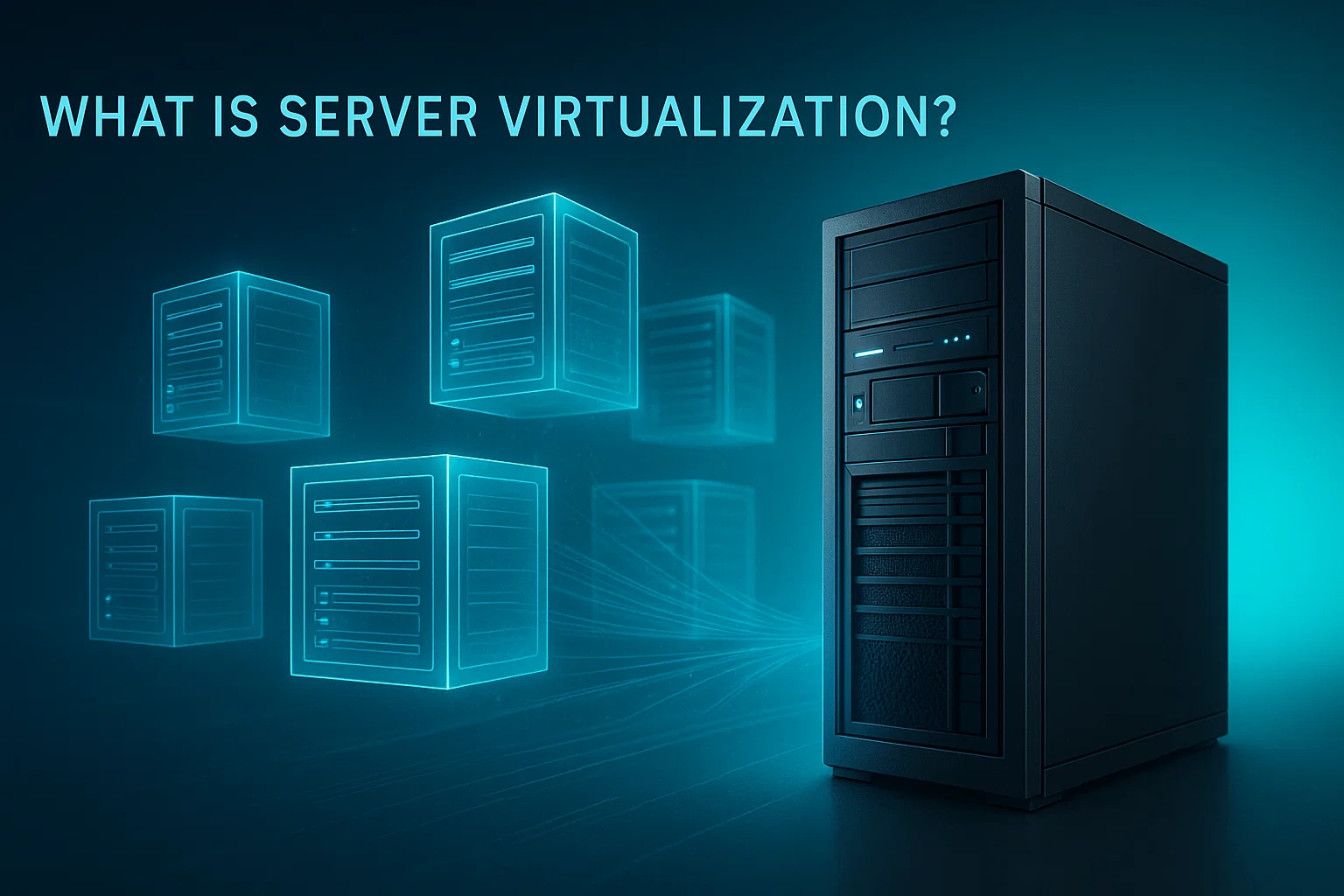
Each virtual server operates as if it’s a real computer with its own processor and storage. The magic happens through special software that takes all the physical resources (CPU, memory, storage) and shares them between the virtual machines. Each machine works on its own without interfering with the others.
This guide walks you through everything you need to implement virtualization in your business. You’ll learn the three main types, understand the real cost savings, and get practical steps to avoid common implementation mistakes.
How Server Virtualization Works
To define server virtualization in plain terms, it’s like having a traffic controller for your server resources. This controller is called a hypervisor, and it stands between your physical hardware and the virtual machines, directing traffic and keeping everyone in their lane.
When you turn on your server, this traffic controller boots up first. Then it hands out resources to each virtual machine based on what they need. Every VM gets its own operating system and apps, so they all think they’re running on their own dedicated hardware.
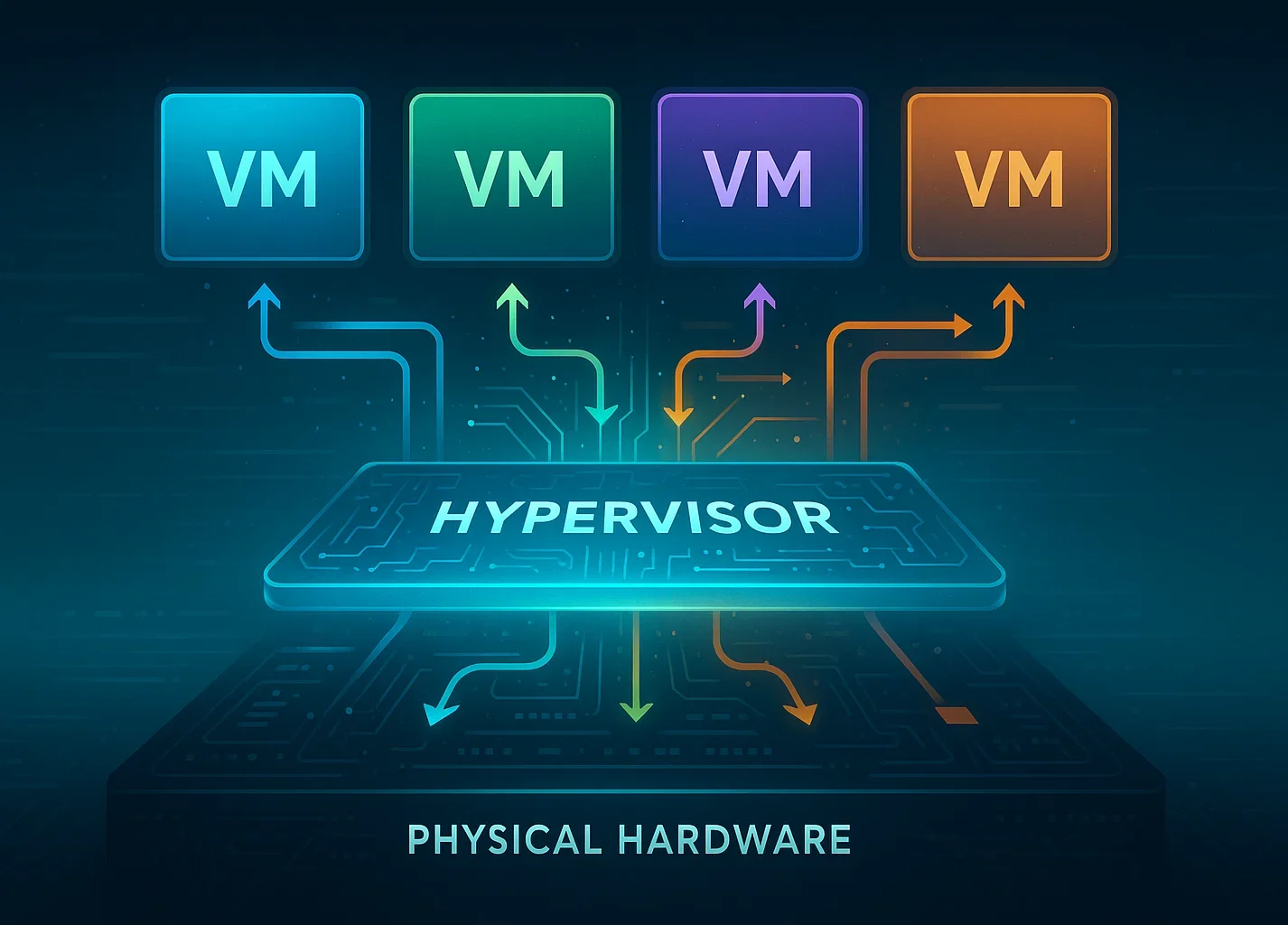
The users connecting to these VMs can’t tell they’re sharing the same physical box with others. If one VM suddenly needs more power, the traffic controller can grab some from VMs that aren’t busy, which keeps everything running smoothly.
The controller also makes sure none of the VMs can peek at each other’s data. This traffic controller system makes server virtualization work by fairly sharing resources while keeping everyone separated.
The Three Types of Server Virtualization
When setting up virtualization, you’ll run into three main approaches. Each one handles the process differently, and understanding them helps explain server virtualization more thoroughly. Every type has its own technical approach to resource management.
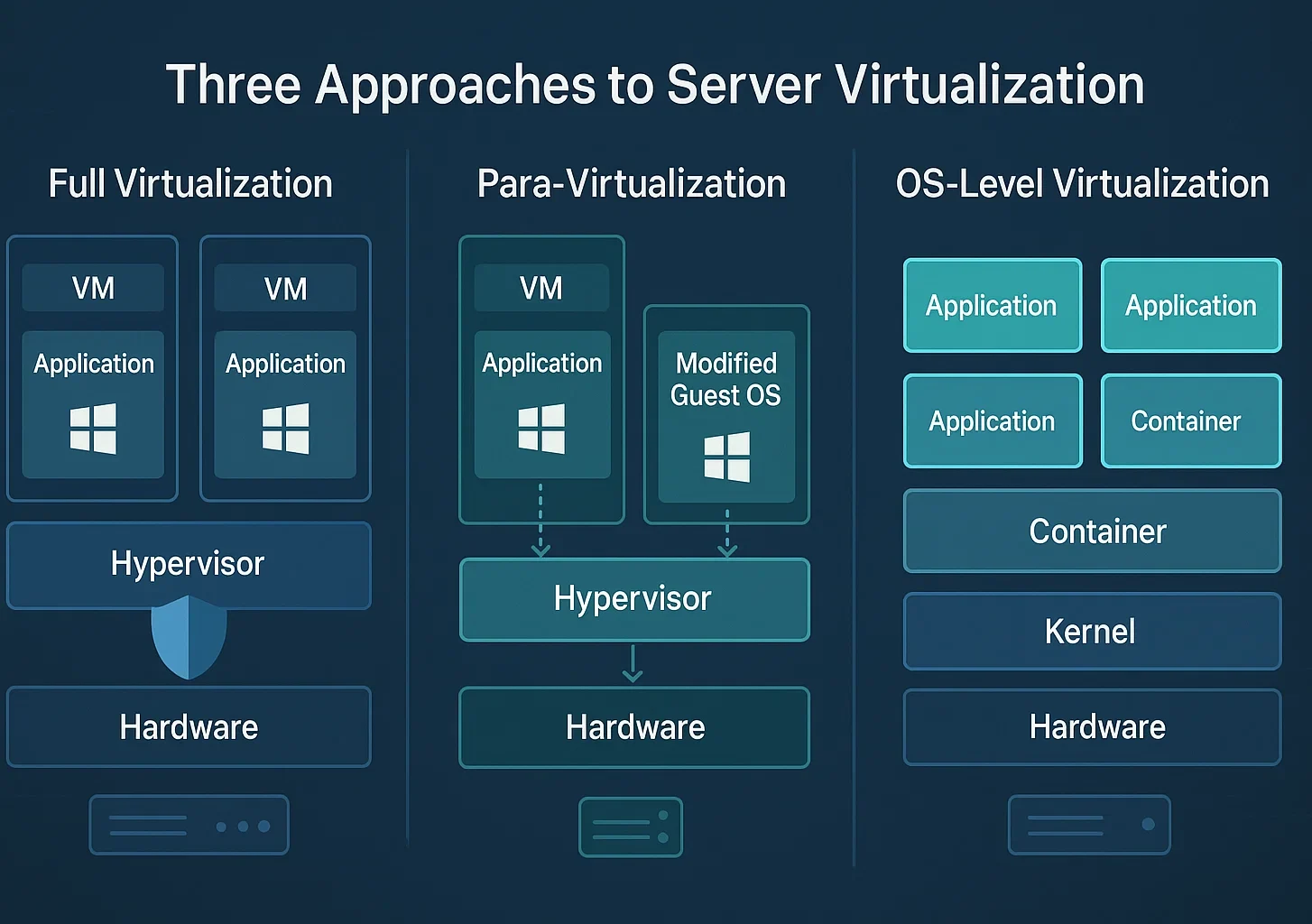
Full Virtualization
Full virtualization creates a complete simulation of the underlying hardware. The guest operating systems run unmodified because the hypervisor translates all their instructions into ones the physical hardware can handle.
This translation happens in real time through binary translation techniques. The VMs believe they’re running on dedicated hardware because the hypervisor intercepts their calls and presents a consistent hardware interface.
VMware ESXi and Microsoft Hyper-V provide this full hardware abstraction, making them great for running multiple different operating systems on the same host.
Para-Virtualization
Para-virtualization modifies the guest operating system to work cooperatively with the hypervisor. Instead of the hypervisor pretending to be real hardware, the OS knows it’s virtualized and makes special calls (called hypercalls) directly to the hypervisor.
This skips the translation step needed in full virtualization, reducing overhead and improving performance. Xen is the primary example of this approach, where the guest operating system is modified to communicate directly with the hypervisor through hypercalls.
The trade-off is that you must use operating systems specifically modified to work with your hypervisor, which limits flexibility compared to full virtualization.
OS-Level Virtualization
OS-level virtualization takes a completely different path. Instead of virtualizing hardware, it creates isolated user spaces within a single operating system kernel.
All containers share the same OS kernel but have their own file systems, network stacks, and process tables. This makes containers extremely lightweight since they start up in seconds and use minimal resources because there’s no separate OS running in each instance.
Docker and LXC use this approach, which is perfect for applications that need the same underlying OS. Each type has its sweet spots depending on what you need to accomplish.
Key Benefits of Server Virtualization
The technical definition might seem complex, but the benefits are easy to understand. It solves real business problems in practical ways.
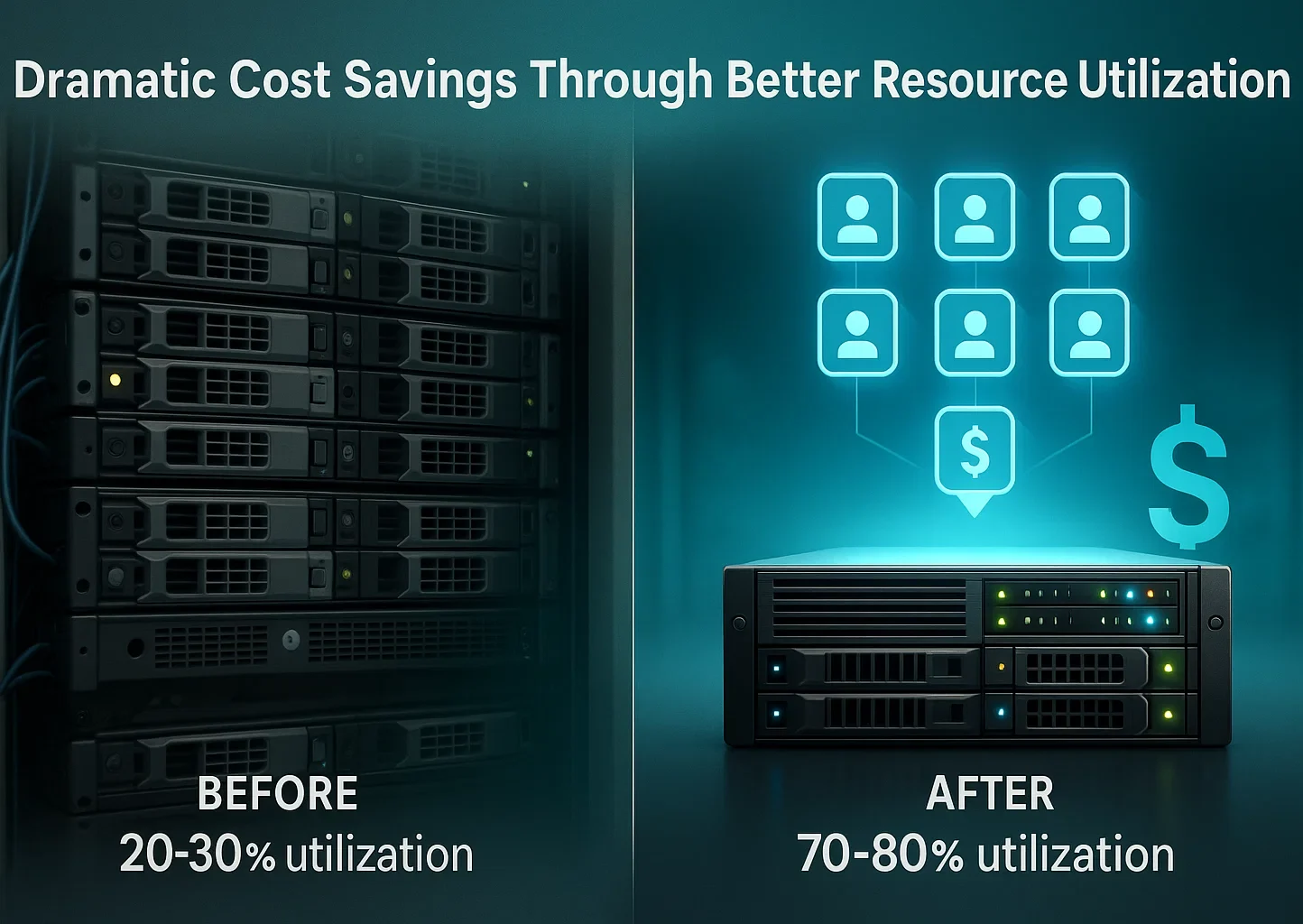
First, it makes your servers work harder. Without virtualization, physical servers typically run at just 20-30% capacity, yet with virtualization, that jumps to 70-80% or higher. You’re finally using what you paid for.
Second, it saves money everywhere you look. Companies typically cut hardware costs by 40-70%, and your power bill drops substantially.
According to the Energy Star program, decommissioning a single 1U rack server through virtualization can save approximately $500 annually in energy costs alone. Maintenance gets cheaper, and you need less floor space in your data center.
Third, it makes your business more nimble. Need a new server? With virtualization, you can create one in minutes instead of waiting weeks for hardware.
Need more resources? Just adjust the settings without any hardware shopping required. This flexibility means your tech can quickly adapt to whatever your business needs. Understanding “what is server virtualization” and its benefits helps businesses make informed infrastructure decisions that directly impact their bottom line.
Server Virtualization Advantages and Disadvantages
Looking at server virtualization in terms of real-world impact helps you decide if it’s right for your needs. Here’s the straight talk:
| Advantages | Disadvantages |
| Hardware consolidation reduces capital expenditure by 40-60% | Initial implementation requires specialized expertise and planning |
| Energy consumption decreases by 60-80% for equivalent workloads | A single hardware failure can impact multiple virtual workloads |
| Disaster recovery capabilities improve with hardware-independent VM restoration | Virtualization licensing models can increase software costs |
| Workload provisioning accelerates from weeks to minutes | Resource contention can emerge under improper capacity planning |
| Dynamic resource allocation improves utilization efficiency | Security considerations increase with workload density |
| Centralized management reduces administrative overhead | Technical staff require additional specialized training |
| Testing environments can precisely replicate production configurations | Improper governance can lead to uncontrolled VM proliferation |
| Infrastructure modernization proceeds without hardware replacement | I/O-intensive applications may experience performance penalties |
For most businesses, the advantages outweigh the disadvantages substantially. Many of the downsides can be fixed with good planning and training, so when you weigh everything, virtualization usually wins for most business cases.
Common Use Cases for Virtual Servers
Wondering what virtual servers are used for? Lots of practical things that help businesses every day.
Development and Testing Environments
Development teams can quickly clone production environments to test code against exact replicas without purchasing separate hardware. They can simulate multiple client operating systems simultaneously and create sandboxed environments that don’t affect production.
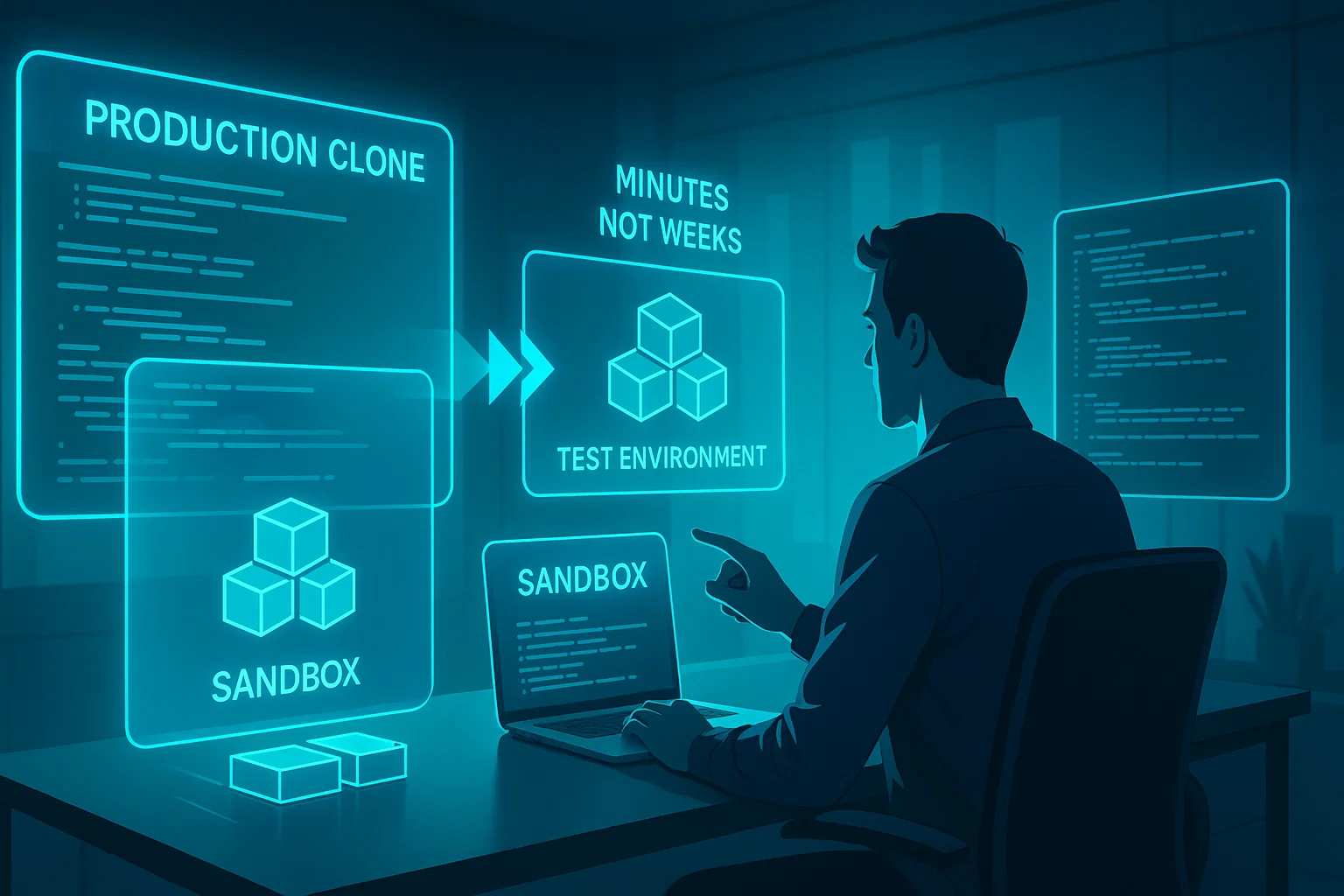
This speeds up development cycles dramatically while improving software quality by catching bugs earlier in the process.
Server Consolidation
Server consolidation transforms enterprise data centers. Rather than running hundreds of separate physical servers at 10-20% utilization, companies consolidate them onto a handful of powerful hosts running at 70-80% efficiency.
A typical consolidation ratio ranges from 10:1 to 20:1, meaning one physical server now hosts 10-20 virtual machines. This consolidation brings multiple benefits beyond just reducing hardware counts.
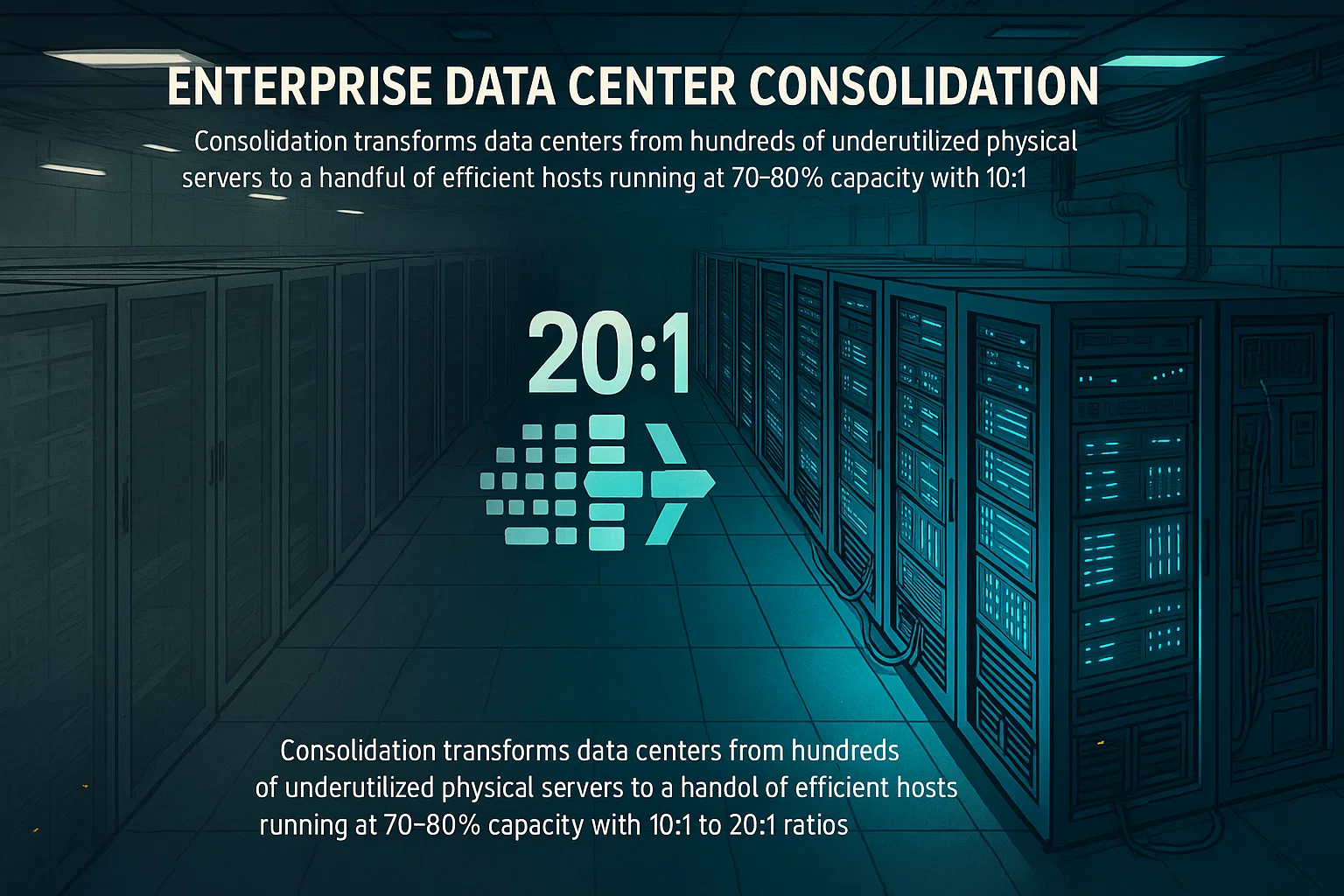
It simplifies cabling, networking, and power distribution throughout the data center. Fewer physical servers mean reduced cooling requirements, lower electricity bills, and less physical space needed for equipment.
Organizations also benefit from simplified licensing, easier patch management, and reduced maintenance windows. Companies exploring virtualized infrastructure options often research “what is a VPS provider” to understand how managed services can simplify their consolidation strategy.
Disaster Recovery
Disaster recovery undergoes a complete transformation with virtualization. Traditional disaster recovery required identical physical hardware at both primary and backup sites, making it prohibitively expensive for many businesses.
With virtualization, VM images are hardware-independent and can be restored to any compatible host. Features like VMware’s Site Recovery Manager or Hyper-V Replica automate failover processes, reducing recovery time objectives (RTOs) from days to minutes.
Companies can implement geographic redundancy at a fraction of the traditional cost. Virtual servers give you reliability and flexibility that physical servers simply can’t match.
Server Virtualization Solutions in 2025
Before exploring specific platforms, understanding the definition of server virtualization helps you evaluate which technologies match your needs. In 2025, several server virtualization technologies stand out from the crowd.
VMware vSphere
VMware vSphere continues to be the market leader in enterprise virtualization. Its ESXi hypervisor brings advanced memory management through memory compression technologies that allow higher VM density per host.
vSphere’s Storage vMotion enables live migration of VM storage without downtime, letting IT teams move workloads between different storage tiers based on performance needs.
The vCenter management platform supplies centralized administration, granular resource controls, and integration with thousands of third-party tools and applications.
Microsoft Hyper-V
Microsoft Hyper-V has evolved into a powerful contender, especially in Windows-centric environments. Its integration with System Center supplies comprehensive management capabilities, including automated VM provisioning, patching, and performance monitoring.
Hyper-V’s Shielded VMs feature adds encryption and attestation protections that prevent even administrators from accessing sensitive VM contents. These security features make it particularly attractive for regulated industries with strict compliance requirements.
KVM (Kernel-based Virtual Machine)
KVM leads open-source solutions with its tight Linux kernel integration. Since KVM runs as a kernel module rather than a separate application, it brings near-native performance for Linux workloads.
Its QEMU integration supplies broad hardware support and the ability to emulate different CPU architectures. Organizations concerned about vendor lock-in appreciate that KVM is community-developed with no licensing costs.
According to market research, the global data center virtualization market is valued at approximately $8.9 billion in 2025 and is projected to grow at around 15% annually through 2035. This growth shows how important these technologies have become to modern business.
Container Technologies
Examples of virtualization software also include container technologies like Docker and Kubernetes. Unlike traditional VMs that virtualize hardware, containers virtualize at the operating system level, sharing the host’s kernel while maintaining isolation.
This makes containers extremely lightweight, starting in milliseconds versus minutes for VMs, and they’re efficient, using less memory and storage.
Many organizations now implement hybrid approaches, running containers inside VMs to combine the security benefits of VMs with the density and portability of containers. The market keeps evolving with new options and better ways to integrate everything.
Server Virtualization Security Considerations
A common question is: Is server virtualization secure? The answer is yes, but only if you set it up right.
The hypervisor (that traffic controller software) needs strong protection. If someone hacks it, they could potentially access all your virtual machines, so keep it updated with security patches and lock down who can access it.
Each VM should be isolated from the others. Use network segmentation to keep them properly separated, and apply the same security tools to VMs that you would to physical servers: firewalls, antivirus, and access controls.

New security technologies are specifically built for virtual environments. These include ways to create security boundaries around each VM, tools that can see inside virtual network traffic, and AI systems that spot unusual behavior. When properly set up, virtual environments can be just as secure as physical ones, sometimes even more so.
Server Virtualization Implementation Challenges
Setting up virtualization comes with challenges you should know about before starting.
Performance Issues
Performance issues can pop up if you try to run too many VMs on one host. This often relates to server virtualization hardware limitations and proper sizing.
Monitor resource usage carefully and plan capacity based on actual workload requirements rather than guesswork. Consider your physical server’s CPU, memory, and storage capabilities when determining how many VMs it can support.
Staff Skills
Virtualization requires different knowledge from traditional IT. Your team will need training, or you might need to hire experts, and many companies bring in consultants for the initial setup.
Investing in proper training upfront prevents costly mistakes down the road.
VM Sprawl Management
As you create more VMs, management gets trickier. Without good tools, VMs can multiply uncontrollably, creating chaos, so automation tools and clear policies help maintain control.
Implement governance frameworks that define who can create VMs, how long they should exist, and when they should be decommissioned. Good planning, the right tools, and proper training solve most implementation problems.
Best Practices for Server Virtualization
Successfully implementing virtualization requires following proven best practices that maximize benefits while minimizing risks. Once you grasp “what is server virtualization” and its core principles, these practices become straightforward to apply.

Capacity Planning
Start with thorough capacity planning. Document current server utilization rates, application requirements, and growth projections.
This baseline data helps you size your virtualization infrastructure correctly and avoid overcommitting resources.
Resource Allocation
Avoid allocating more resources than VMs actually need. Over-provisioning wastes capacity and reduces consolidation ratios.
Use monitoring tools to track real usage patterns and adjust allocations based on actual demand rather than perceived needs.
High Availability Configuration
Implement high availability features to protect against hardware failures. Configure VM replication, clustering, and automated failover, then test disaster recovery procedures regularly to confirm they work when needed.
Regular Maintenance
Schedule regular maintenance windows for hypervisor updates, security patches, and performance optimization. Keep virtualization management tools current to take advantage of new features and bug fixes.
Documentation
Maintain comprehensive documentation of your virtual infrastructure. Document VM configurations, network layouts, storage mappings, and recovery procedures.
Good documentation speeds troubleshooting and helps new team members get up to speed quickly.
Cloudzy’s Virtual Server Solutions
At Cloudzy, our virtual servers solve real business problems with fast NVMe/SSD storage and network connections up to 40 Gbps. Our Linux VPS plans fit any size business, from 1GB starter packages to 64GB top-tier options with modern high-frequency CPUs.
Windows VPS and RDP options cater to business software needs, while Forex VPS plans include MetaTrader 4 for ultra-low latency trading. Ready to get started? Buy VPS server plans from Cloudzy for business-grade virtualization without complexity.
Conclusion
Server virtualization transforms business infrastructure by converting one physical server into multiple virtual servers that operate independently. The benefits include substantial cost savings, increased flexibility, and smarter resource utilization, with three main types (full, para, and OS-level) serving specific purposes.
Throughout 2025, virtualization technology continues advancing with stronger security features, more intuitive management tools, and expanded integration capabilities. Organizations embracing virtualization gain competitive advantages through improved agility, reduced costs, and better resource efficiency for modern IT operations.
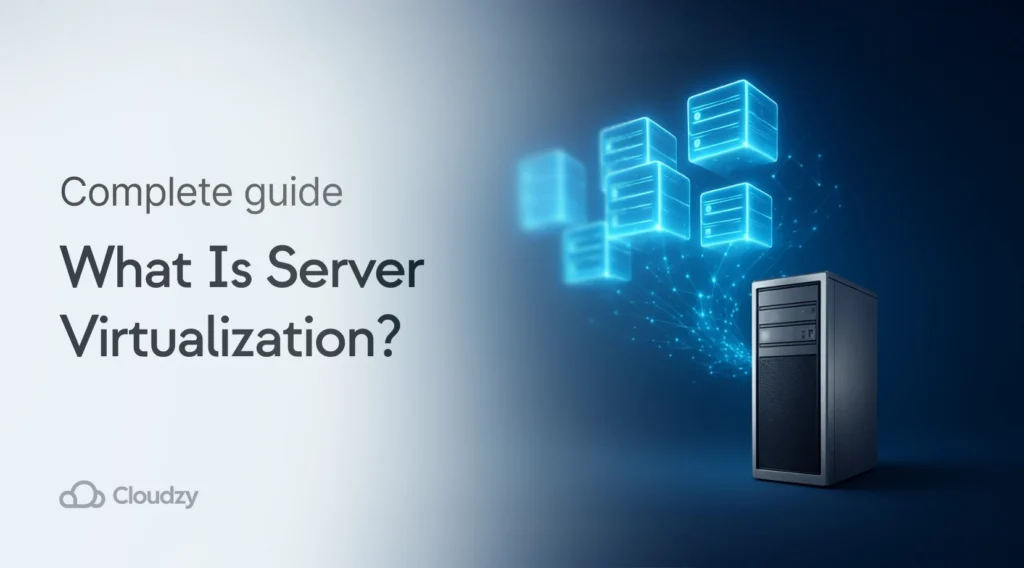
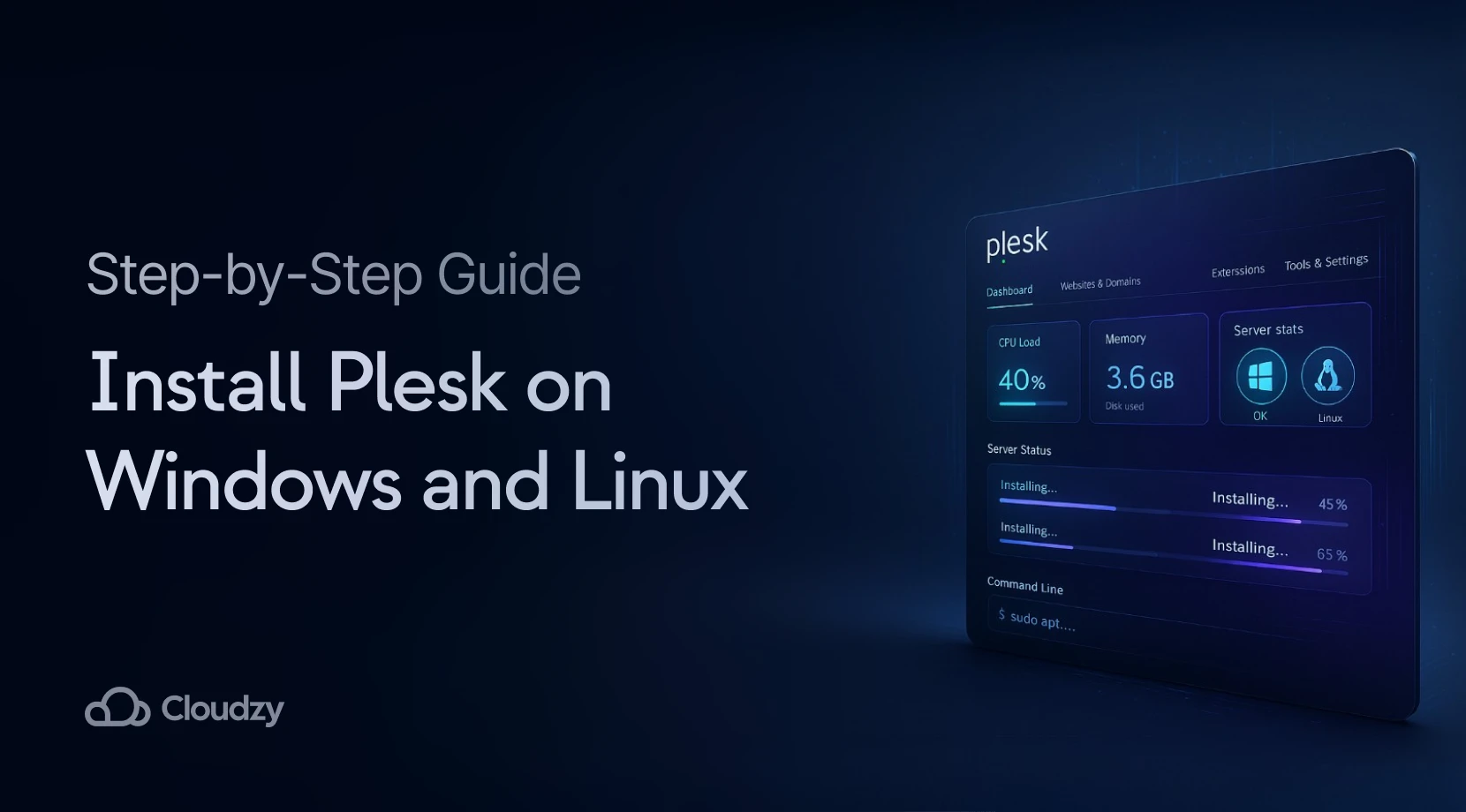
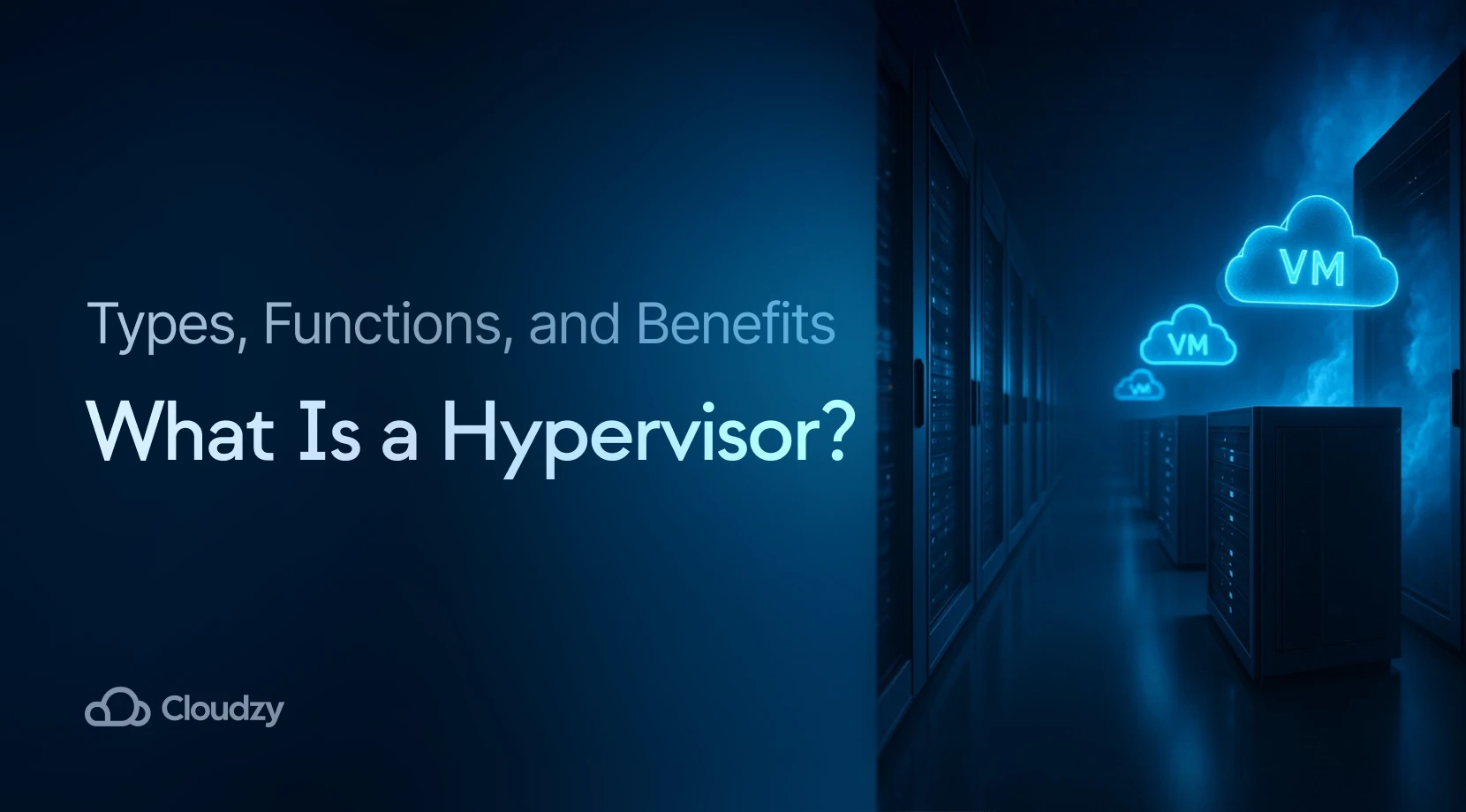
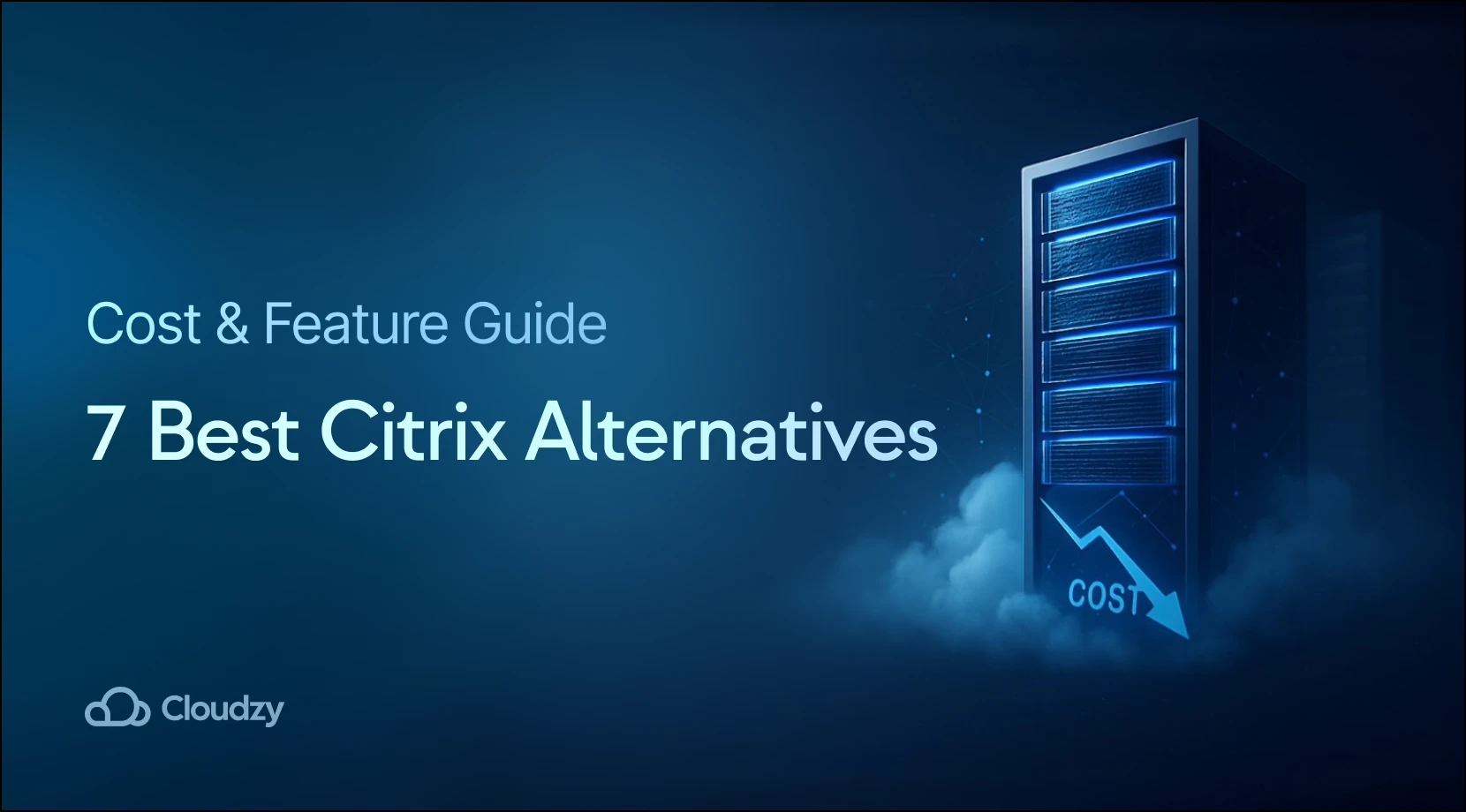
2 thoughts on “Everything You Need to Know About Server Virtualization in 2025”
Hi would you mind stating which blog platform you’re
working with? I’m going to start my own blog in the near future
but I’m having a difficult time deciding between BlogEngine/Wordpress/B2evolution and Drupal.
The reason I ask is because your layout seems different then most blogs and I’m looking for something completely
unique. P.S Apologies for getting off-topic but I had to ask!
It’s remarkable to visit this site and reading the views
of all colleagues concerning this paragraph, while I am also keen of getting familiarity.